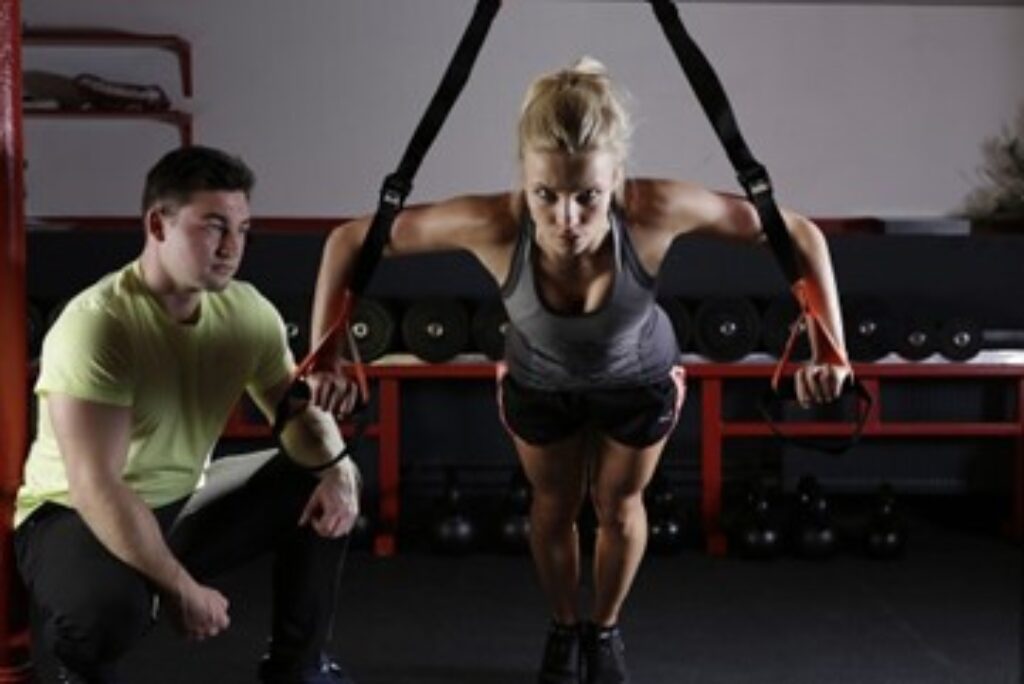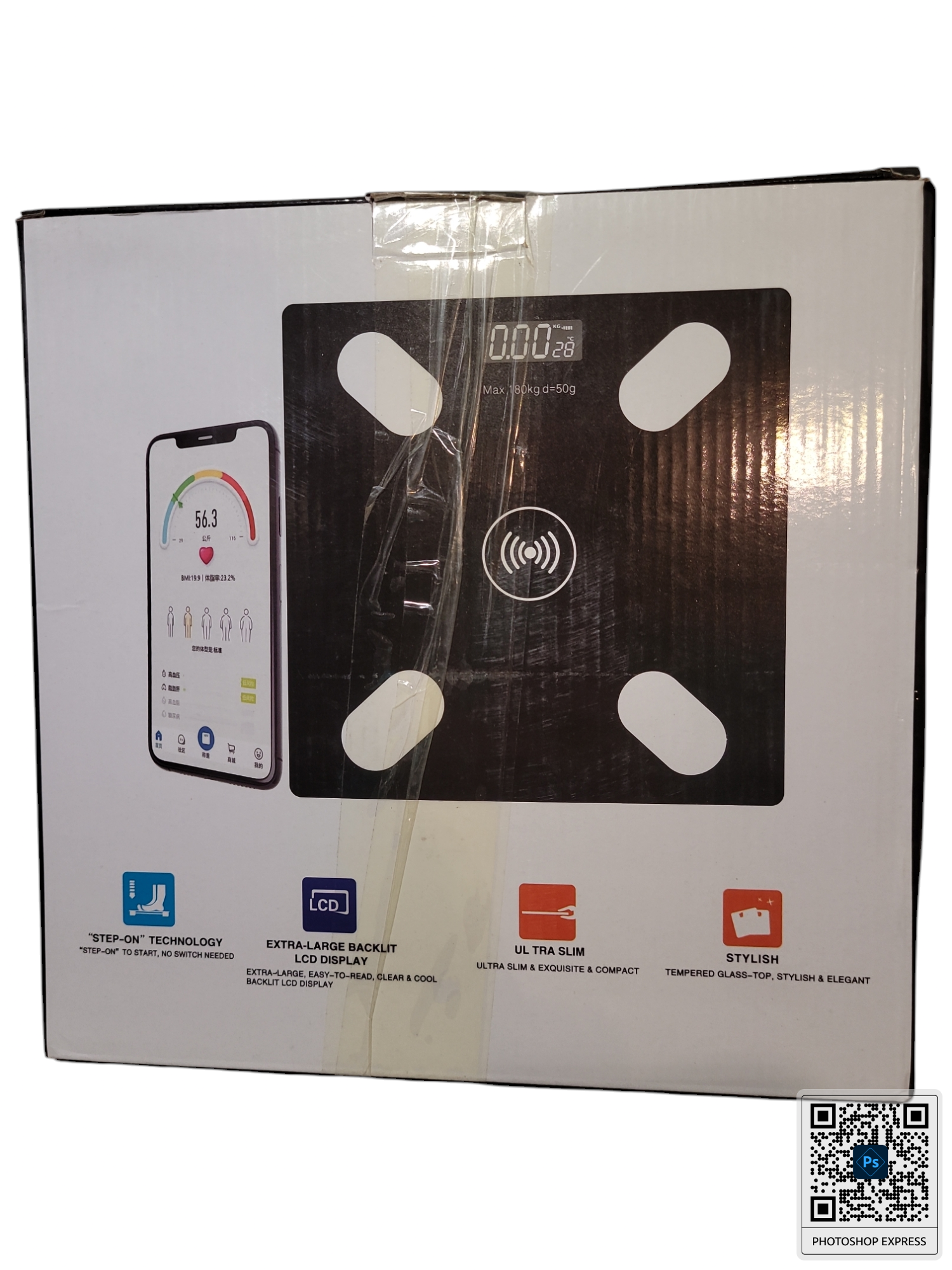
People often talk about wanting to lose weight and dream of looking like lean models with perfectly toned bodies. However, in most instances, you typically want to lose body fat. If you lose weight, you will end up losing both fat and muscle, which will make your body smaller, but it won’t really change your shape. It certainly will not make you appear leaner or athletically toned. Similarly, it will not make you stronger.
It’s why you don’t want to run after weight loss but rather shift your goal toward a more holistic approach to fat loss and muscle gain with healthy diet plans and muscle-building exercises. However, many people find it to be quite challenging to lose fat while holding on to and building their muscles.
Let’s see why!
Step up your fitness game with the latest must-have: the Bluetooth bathroom scale! Stay on track with your weight loss goals in style 💪🏼 #fitness #smartscale #digital"
- Step-ON Technology
- Extra-Large BackLit LCD Display
- Ultra Slim
- Stylish
Get precision and convenience with the new smart scale for body weight! Your bathroom just got a major upgrade 🌟 #bathroomscale #fitnessinfluencer
Upgrade your fitness routine with the digital scale that does it all! Track your progress like a pro and reach your goals faster 🏋🏼♂️ #smartscale #fitnessenthusiast
Fat Loss vs Muscle Gain
Individuals find it difficult to gain muscle while losing fat because the general understanding is that if you want to lose weight, your body needs to be in a caloric deficit. It will force your body to use its fat stores as the fuel you need to remain healthy. Meanwhile, if you wish to gain muscle mass, your body requires surplus calories that can provide you with the energy needed to repair and build larger muscles. Given this basic understanding, losing fat while gaining muscle seems like an impossibility as they appear to be seemingly incompatible goals.
However, if you take a deeper, more nuanced look, you will realize that building muscle and burning fat don’t have to be mutually exclusive goals. All you need to realize your goals is the right know-how of training and proper diet. It also depends on your starting point, i.e., the beginning of your fitness journey, your weight, muscle mass, etc., and where you hope to finish.
Studies That Support Simultaneous Fat Loss and Muscle Gain
Contrary to popular belief, it’s entirely possible to lose fat and build muscle at the same time. This process is often referred to as body recomposition or recomping. In fact, there are countless researches and studies that have shown time and again that with the right exercise and healthy diet plans, you can gain muscle mass and lose fat simultaneously.
A study revealed that men resistance training for four weeks while eating in a 40% calorie deficit were able to increase their lean body mass. They focused on high-intensity interval training and consumed a high-protein diet. Another study discovered that young women who followed a combination of strength training and cardio for twelve weeks increased their muscle mass by almost 9% and lost an average of 10% body fat.
A smaller study focused on older women revealed that after a swimming program of twelve weeks, the women experienced an increase in physical strength and a decrease in body fat. These studies suggest that it is indeed possible to lose fat while gaining muscle mass. However, the trick lies in finding the right balance between your diet and exercise routine.
So, without further ado, let’s explore how to lose fat and gain muscle at the same time!
6 Ways to Lose Fat and Gain Muscle at the Same Time
1. Follow Healthy Diet Plans
Exercise alone is simply not enough to help you build muscle mass and reduce fat. It all boils down to what you eat. Healthy diet plans are the key to losing fat and gaining muscle simultaneously. After all, as mentioned earlier, your body needs the right amount of energy to gain muscles. Knowing how much to eat will depend on your body-fat levels.
For instance, if you don’t have much fat to lose, you should try to consume maintenance calories only, i.e., the number of calories your body requires to support energy expenditure. However, if you have more fat to lose, you might benefit from going into a slight calorie deficit, the operative word being slight because if you lose too many calories, it will be harder for you to build muscles. In fact, a large calorie deficit will lead you to lose muscle tissue and feel tired, which will get in the way of your workout routine.
If you’re aiming for a slight calorie deficit, it’s important to consume foods that are low in calorie intake but high in nutritional value. It will ensure that your body is fed properly, and your base metabolic rate is working fine. Otherwise, if you only focus on the calorie deficit, your body might think it’s starving. In that case, it will shut down your metabolism to help you survive. It might also lead your body to break down your muscles and hold onto the fat, which is the exact opposite of what you want!

Aim for a Protein-Rich Diet
You need to find a protein-rich diet. If you have a healthy diet plan with high amounts of protein in it, you will likely retain and build lean muscle. A study revealed that women who performed resistance training and followed a high-protein diet were able to build muscle and lose fat simultaneously.
With that said, there’s no clean-cut or surefire way to tell how much protein you should incorporate into your diet plan. However, research suggests that 1.6 grams of protein per kilogram of body weight is the ideal intake for someone looking to increase their muscle mass. Naturally, this figure will vary based on your specific needs and your body’s requirements.
Apart from protein, make sure to add healthy carbs and fats to your diet as well. You should aim for a diet that provides you with holistic wellness, health, and energy. It’s best to choose whole, organic, single-ingredient foods, such as fiber and green veggies. They will improve your satiety and curb your cravings.
1. Perform Resistance Training with Progressive Overload
Resistance training is essential for recomping, i.e., reducing your body fat and adding muscle mass. It’s also the ideal muscle-building workout. Resistance training with heavy weights will help you to gain muscle weight and also enable you to retain your muscles if you’re in a calorie deficit.
However, strength training alone isn’t enough to get the job done. You need to apply the concept of progressive overload. It entails gradually increasing your lifting weight, either by increasing the number of repetitions you perform with the same weight or increasing the weight you lift while maintaining the number of reps.
After all, for your body to truly build muscle mass, you will need to lift relatively heavy weights in gradual increments to a point where your muscles reach a point of extreme fatigue and breakdown. Once that happens, your muscles will start repairing, and your body will become more defined.

If you’re new to weights and have a higher body-fat percentage, you might not need to lean on progressive overloading. It’s because your body will bless you with “beginner’s gains”. It’s essentially rapid muscle growth that occurs when an individual starts weight lifting for the first time. Your muscle tissue will increase due to neurological adaptations to a new stimulus.
However, the same is not the case for an advanced, athletic, and lean individual. The more advanced you are, the harder you will need to work to gain more muscle mass. If you don’t challenge your body, it will get used to the intensity of your workout, and the results of your workout will slow down. However, if you continue to provide your body with gradually changing stimulus, it will strive to adapt to the stimulus and offer you much better results.
Progressive overloading not only helps you with body recomposition, but also keeps you on your toes and motivated. However, the key to this concept is increasing the intensity of your workouts gradually so that you don’t put an unbearable strain on your body, which can lead to injury.
Additionally, when strength training, you must ensure your body is getting the required amount of calories to rebuild the muscles. If you don’t follow a reliable, protein-rich, and healthy diet plan that provides you with the necessary calories, your muscles will break down to fuel your body.
1. Choose Walking over Running
When trying to lose fat while building muscle mass, you don’t need to perform a lot of cardio. In fact, if you’re in a calorie deficit, performing high-intensity cardio workouts might lead you to lose lean tissue. It’s why you must keep active by opting for low-intensity cardio workouts, such as walking rather than running or jogging.
It’s because, during a low-intensity workout, such as walking, your body will use fat as the fuel source. Additionally, strenuous cardio workouts can put a lot of unneeded stress on your body, which will interfere with the recovery process of your muscles, cause water retention, and increase your appetite. It’s why an intense cardio workout might not be the best fit if you’re looking to recomp your body.

1. Look into HIIT Combined with Strength Training
Combining high-intensity strength-training circuits with light weights and high reps with bursts of cardio mixed in can translate into an effective muscle-building workout program. It will help you get your heart rate up, lose fat, and gain muscle mass simultaneously.
How so?
Well, while weight lifting will strengthen and build your muscles, cardiovascular activity will elevate your heart rate. Additionally, while strength training burns calories long after the workout ends, as it breaks down your muscles and rebuilds them after the training session, cardio helps you blast calories during the workout.
Combining these two forms of workout will ensure that your heart rate remains elevated and you burn more calories during the workout. It’s the ideal solution for individuals with higher body-fat levels. Just make sure that you are following a healthy diet plan to prevent your body from using your muscles to gain energy.
2. Don’t Weigh Yourself
With a goal like body recomp, you cannot seek instant gratification and expect to see immediate results. It’s important to exercise patience and measure your progress in ways other than weighing yourself on the scale since your goal isn’t just to lose fat. It’s why your progress might feel slow to you because, unlike dedicated weight loss programs, you will not be able to measure it by monitoring the value on your scale. In fact, you might train for a month but see no actual change in your scale weight.
So, how can you measure your progress to stay motivated?
Measuring body recomp without expensive equipment might be challenging, but it’s certainly doable. You can measure your waist before starting and then check it every week to see the results. Similarly, you can measure your quads, glutes, biceps, and other muscles to see if you are gaining muscle mass. Another neat trick is to wear a pair of tight-fitting jeans every week to see whether they start to feel tighter in some places due to muscle gain.

1. Exercise Patience
Lastly, you need to understand that changing your body composition is a long process that will not show you incredible results overnight. Even regular, healthy weight loss doesn’t happen overnight. However, combined with muscle gain, it will take even longer.
However, this doesn’t mean that you start feeling discouraged. All you have to do is be patient and don’t rush the recomp process. Even though it might be tempting to lose weight quickly, doing so will result in muscle loss. Instead, focus on losing one pound per week and don’t get discouraged if your progress slows down.
Moreover, instead of waiting to see results to remain motivated, find different ways to keep your morale up. Set challenging training goals for yourself that you can gradually work toward. Setting such goals will help you realize how much stronger you are getting. It will motivate you to keep going even when you feel no apparent changes in your physique.
The Bottom Line
Despite the common misconception, it is entirely possible to lose fat and gain muscle simultaneously. All you need is the right healthy diet plans and muscle-building workouts to achieve the desired results. Just remember that body recomping required dedication and patience, and you will be rewarded with impressive results.


